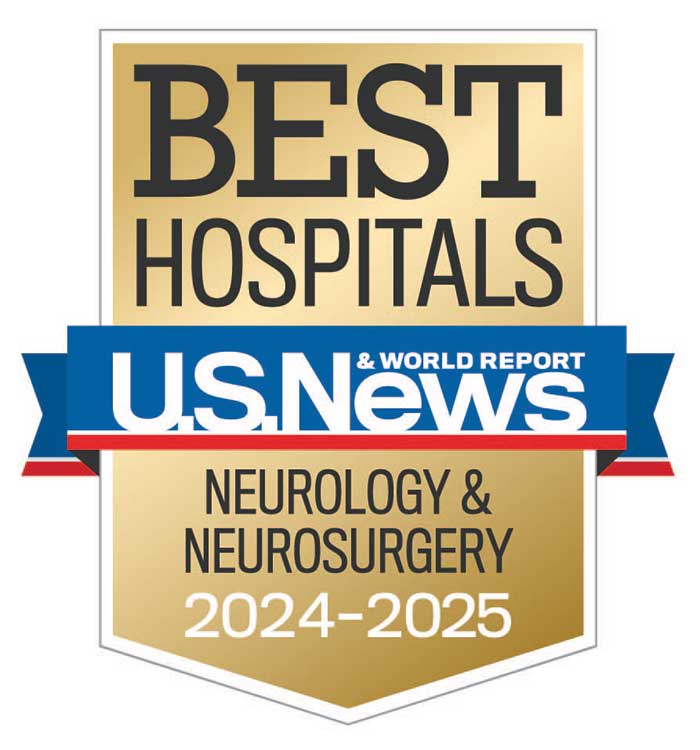Telestroke System Emphasizes Partnership with Regional Facilities for Improved Patient Outcomes
Penn State Milton S. Hershey Medical Center spearheads a sophisticated telestroke system, LionNet, expanding the capabilities of partner hospitals. By exposing more patients to specialized neurological care, LionNet can dramatically increase positive outcomes for patients with both ischemic and hemorrhagic stroke.
Using advanced computer systems with webcams, LionNet allows a Penn State Hershey stroke neurologist or neurosurgeon to consult in real-time with an ED doctor at a partner facility. The specialist examines the patient remotely, reviews scans, and makes a recommendation regarding whether to begin intravenous tPA therapy or transport the patient for possible neurosurgical intervention at Penn State Hershey Medical Center.
Co-Director of Penn State Stroke Center, Kevin Cockroft, MD, states, “Most of these systems use a ‘hub-and-spoke’ model, where the hub is the central hospital and the spokes are the outlying hospitals, who send patients to the hub. But we have more of a two-way street.”
Raymond Reichwein, MD, co-director of Penn State Hershey Stroke Center, adds that one of the key elements of the program’s success has been quarterly meetings with the Penn State Hershey program director and coordinator at the ten satellite locations. Participants review both successes and areas for improvement, seeking always to decrease the patients’ time to treatment.
When used within three to four and a half hours, tPA is one of the most effective treatments for ischemic stroke, but only 55 percent of Americans have access to primary stroke centers within sixty minutes.1 Since the LionNet telestroke system was implemented in July 2012, tPA is now used in over 25 percent of patients, compared to a national average of just 5 percent.1
Decreasing time to treatment begins in the ambulance. EMTs can currently identify potential stroke patients roughly 78 percent of the time, says Cockroft, and a study scheduled to begin later this year will equip EMTs with iPads to initiate communication with a stroke specialist immediately, and notify the ED.
Reichwein notes the positive effect of the telestroke program on partner sites, stating that some partner sites have attained Primary Stroke Center certification as a result of participation in the program while others are no longer bypassed by EMTs seeking to comply with the “stroke-ready hospital” standards. Even though 75 percent of patients remain in their local facilities, advanced neurological care is available around the clock to ensure patients receive rapid, evidence-based treatment in the most appropriate location. Making those judgments quickly and accurately is critical to significantly reducing complications and, in many cases, providing life-saving treatment.

Kevin M. Cockroft, MD, MSc, FAANS, FACS, FAHA
Co-Director, Penn State Health Stroke Center
Interim Chair, Department of Neurosurgery, Penn State College of Medicine
Professor, Departments of Neurosurgery, Radiology and Public Health Sciences
Phone: 717-531-3828
Email: kcockroft@pennstatehealth.psu.edu
Fellowship: Interventional/Vascular, Thomas Jefferson University Hospital, Philadelphia, Pa.; Neurological Surgery, Stanford University Hospital, Stanford, Calif.
Residency: Neurological Surgery, The New York Hospital-Cornell Medical Center, New York, N.Y.
Medical School: Cornell University Medical College, New York, N.Y.
Connect with Kevin M. Cockroft, MD, MSc, FAANS, FACS, FAHA, on Doximity

Raymond K. Reichwein, MD
Professor of Neurology, Penn State College of Medicine
Chief, Division of Stroke
Comprehensive Stroke Center Co-Medical Director
Penn State Health Rehab Stroke Program Director
Phone: 717-531-1803
Email: rreichwein@pennstatehealth.psu.edu
Fellowship: Neurophysiology, Penn State Health Milton S. Hershey Medical Center, Hershey, Pa.
Residency: Neurology, Penn State Health Milton S. Hershey Medical Center, Hershey, Pa.
Medical School: Penn State College of Medicine, Hershey, Pa.
Connect with Raymond K. Reichwein, MD, on Doximity
References
- Bladin C, Cadilhac D. Effect of Telestroke on Emergent Stroke Care and Stroke Outcomes. Stroke. 2014;45:1876-1880.

